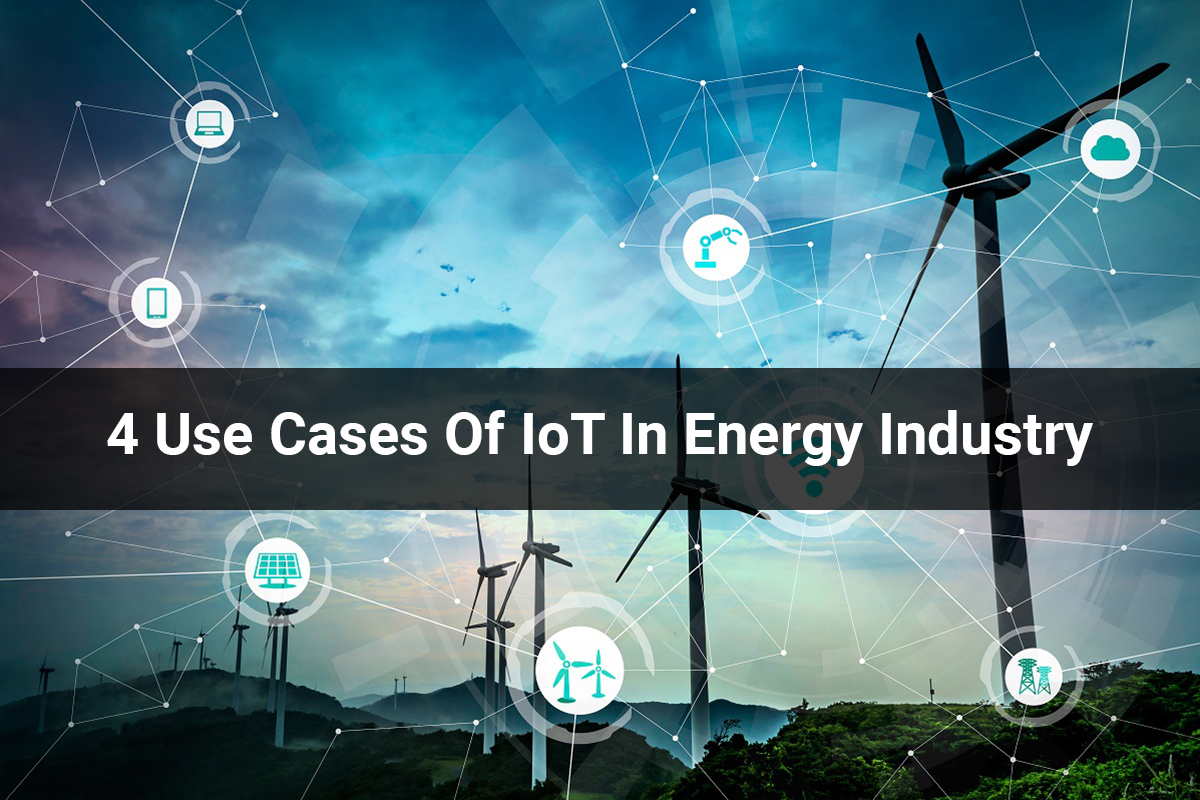4 Use Cases Of IoT In Energy Industry
The Internet of Things is a new technology that uses the Internet to connect physical devices. Therefore, think of IoT as a collective network of connected devices and technology that enables communication between devices and the cloud, as well as between devices themselves. A typical IoT system works on the principle of real-time data collection and exchange.
IoT in energy industry
Examples of IoT applications in energy sector
1. IoT applications for the energy market and regulations
Democratization of energy
Energy democratization means giving end users access to electricity, as well as freedom of choice of energy source for suppliers. Individuals thus participate directly in the energy network and can manage their energy consumption. With more focus on renewable energy sources such as wind or solar, the European energy crisis and the digital disruption of the entire energy sector that we have covered in our previous articles, the concept of energy democracy is more real than ever. Solutions that have greatly contributed to the democratization of energy include Peer-to-Peer energy trading. P2P energy trading systems enable the sharing and trading of energy within a community without the need for conventional large companies to act as a binding intermediary.
2. IoT applications for energy supply
Preventive and breakdown maintenance
Perhaps the greatest potential of the Internet of Things in preventive and breakdown maintenance lies in the monitoring of remote energy assets. By analyzing big data collected through static and mobile sensors or cameras, IoT technology can provide monitoring of breakdowns, leaks and fatigue. In addition, IoT makes it possible to identify faults and problems in energy networks and, if necessary, to repair them virtually. This not only helps reduce the risk of failure, production losses and maintenance downtime, but also reduces operating costs, prevents accidents, increases safety and improves service reliability.
3. IoT applications for power grids
Smart networks
As legacy grid infrastructure ages and struggles to keep up with rising energy consumption, governments around the world are focusing on implementing and integrating smart grid technologies. The International Energy Agency (IEA) believes that a smart IoT energy grid is essential to achieving a secure and sustainable future.
The Internet of Things plays a key role when we talk about smart grids. Since the technology and infrastructure components of smart grids are mostly based on the Internet of Things, the Internet of Things is considered the main enabler of smart grids.
A smart grid is an electrical network that consists of infrastructure, hardware and software. Unlike a typical network with one-way communication, a smart grid involves many two-way interactions between all system elements and participants.
A smart grid is often described as a self-sustaining distributed system capable of generating energy from a variety of sources, including renewables and storage.
4. IoT applications for demand-side energy management
Intelligent measuring systems
Commercial buildings in the United States use 18% of all energy and contribute to 20% of greenhouse gas emissions. In this light, reframing the energy consumption and sustainability of buildings is essential to achieving global climate goals. Metering systems using IoT can help make energy consumption more efficient.
Smart metering systems are a replacement for traditional electricity monitoring solutions and this IoT system monitors energy consumption and provides the customer with information that reveals usage trends and peak times, as well as predicting electricity demand and optimizing energy distribution and pricing.
Conclusion
To summarize, IoT represents a new reality that includes the energy industry with real-time applications and cutting-edge technologies.








Leave A Comment
You must be logged in to post a comment.